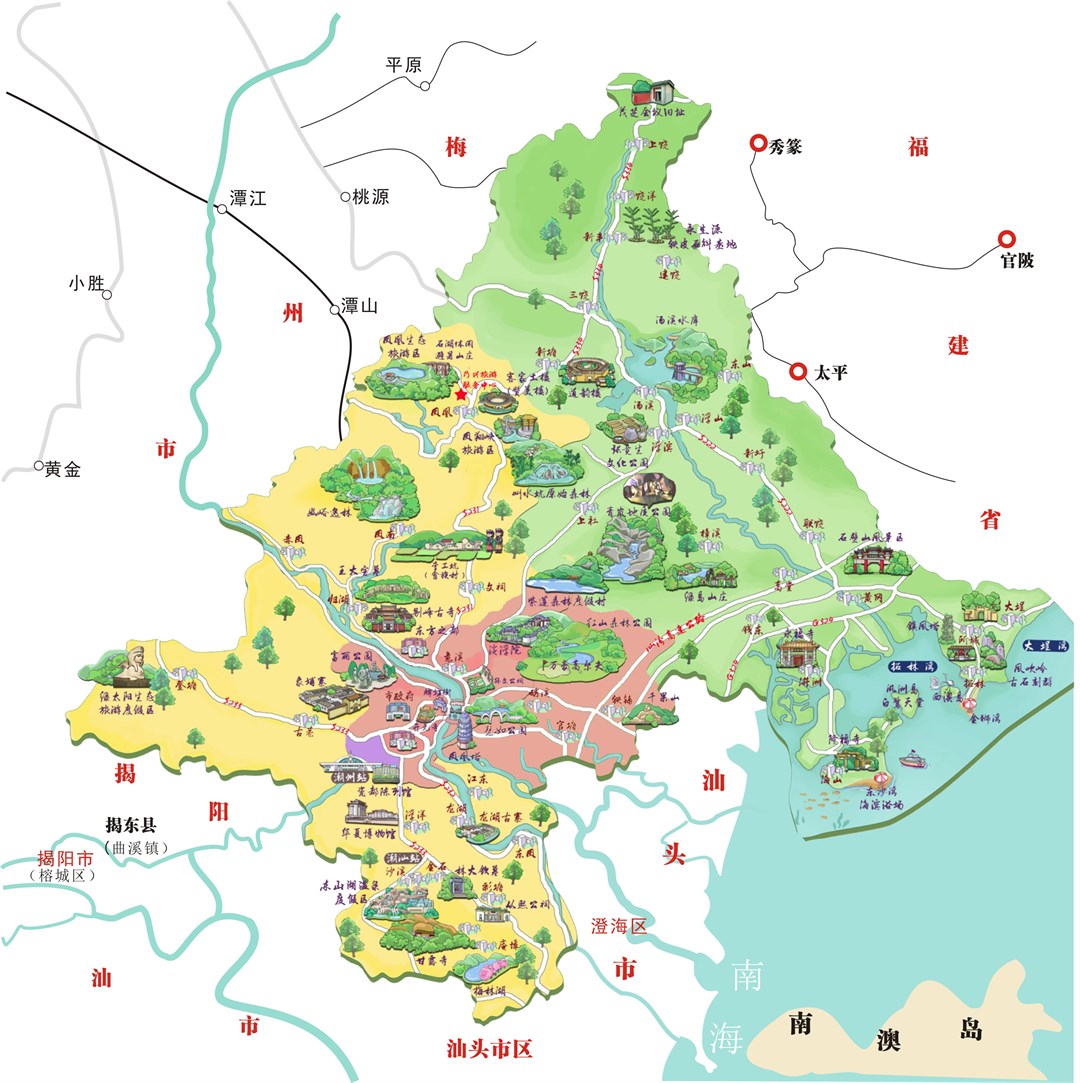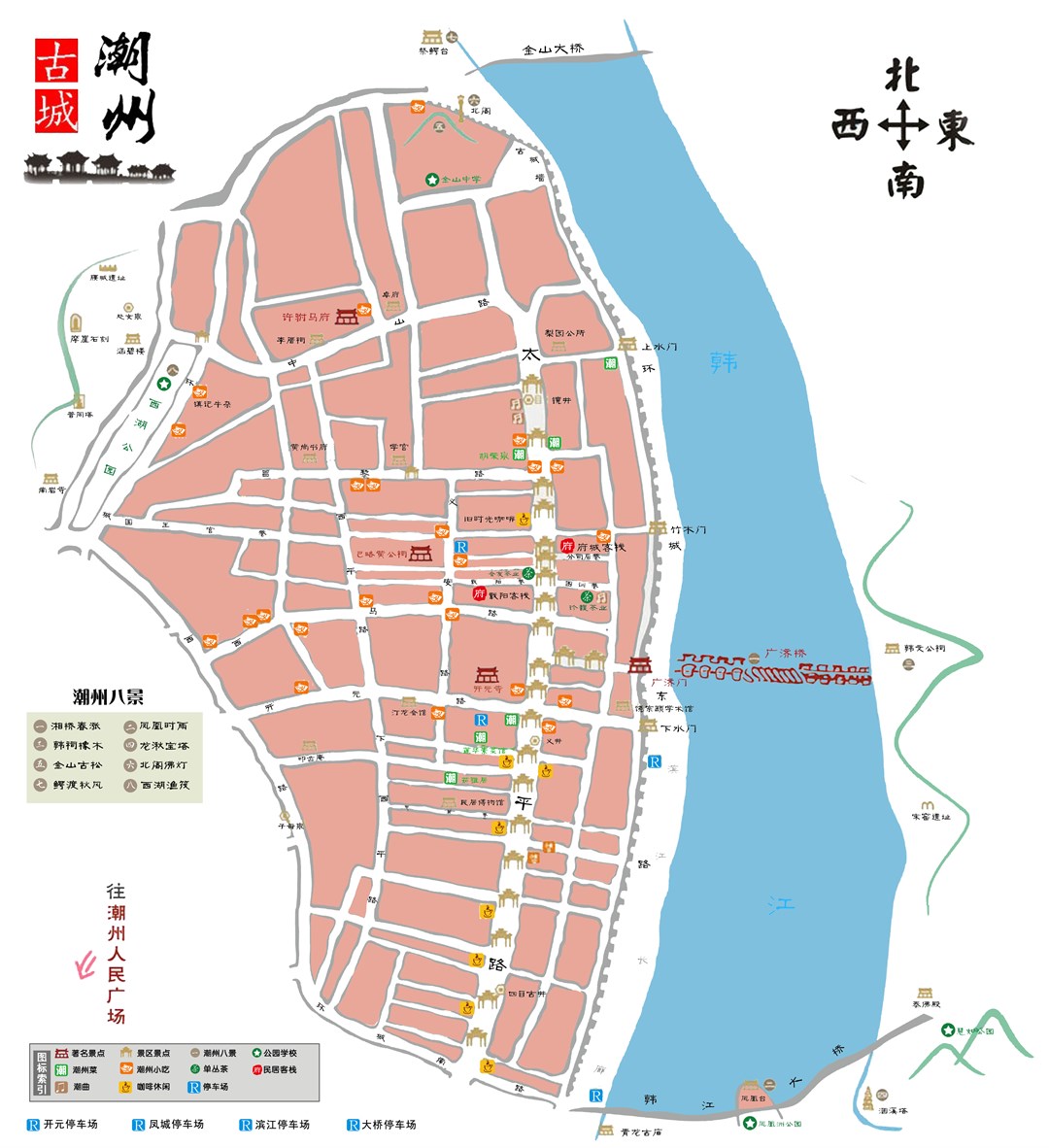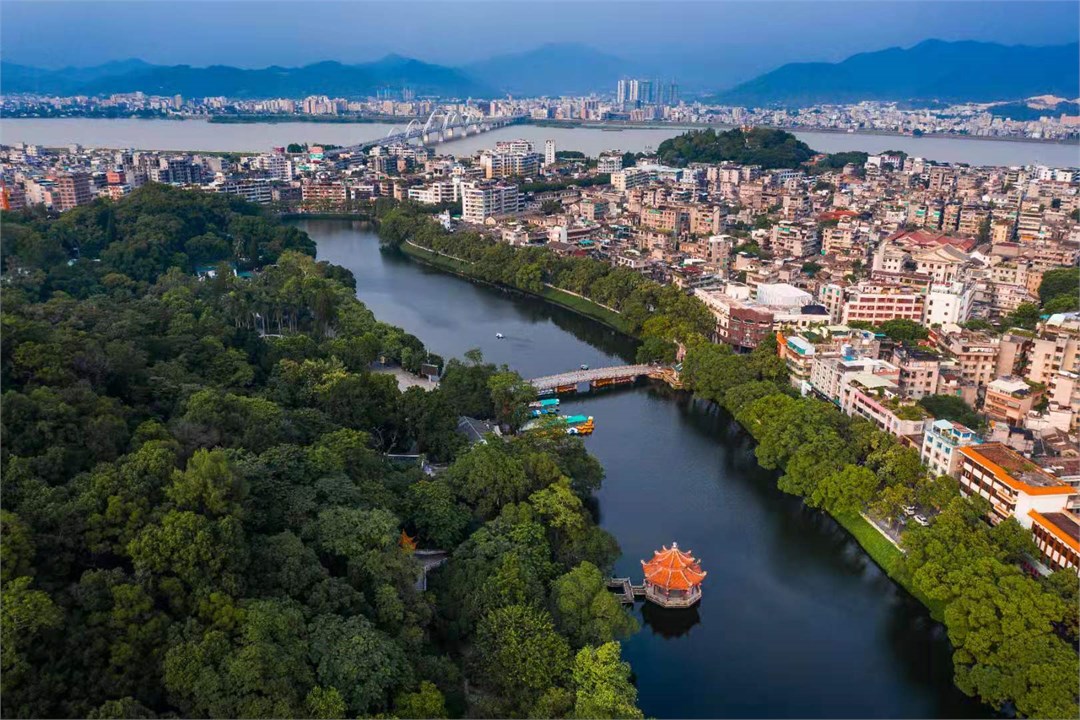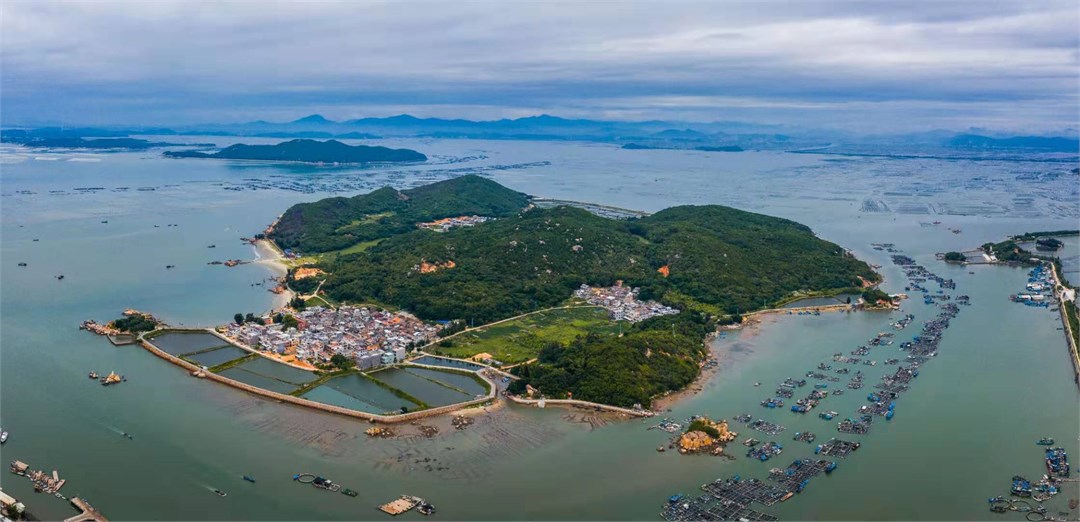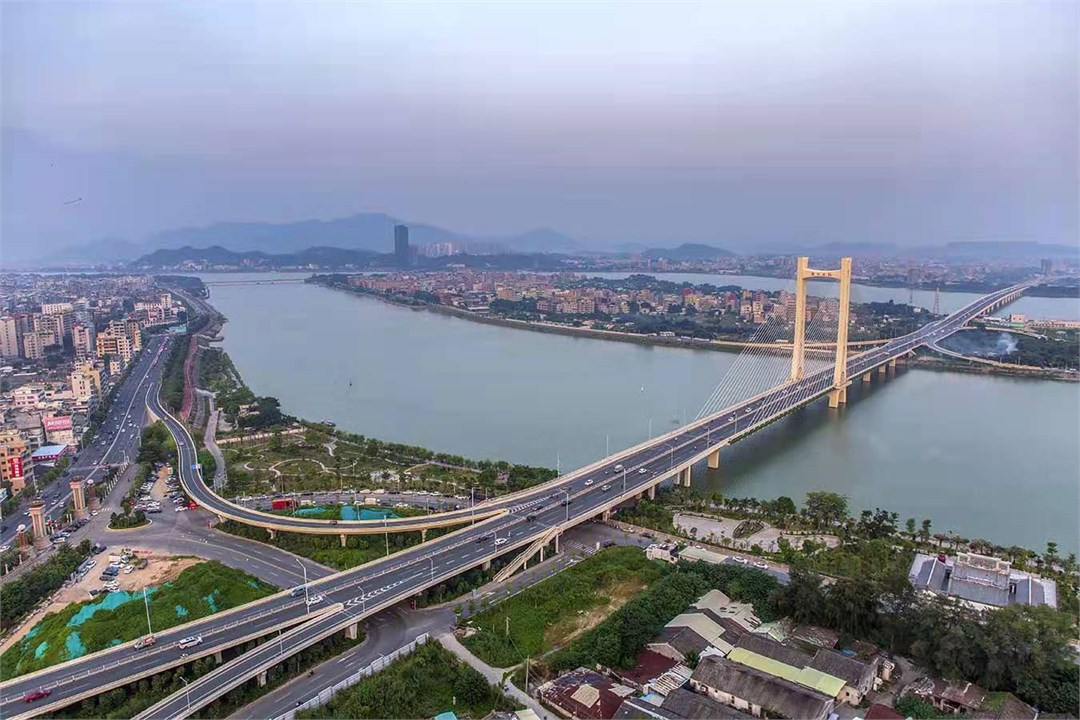Chaozhou, located in the easternmost part of Guangdong Province, borders Zhangzhou of Fujian Province to the east, Shantou to the south, Jieyang to the west and Meizhou to the north and faces the South China Sea. It is a key node city connecting the Guangdong-Hong Kong-Macao Greater Bay Area and the Western Taiwan Straits Economic Zone. Comprised of Raoping County, Chao’an District and Xiangqiao District, the city has an area of 3,693 square kilometers, a coastline of 136 kilometers and a population of 2.576 million. In addition, more than 2.7 million Chaozhou natives and descents make up a sizable community overseas. Chaozhou has long participated actively in foreign trade and served as an important node of the Maritime Silk Road, developing business ties with more than 160 countries and regions.
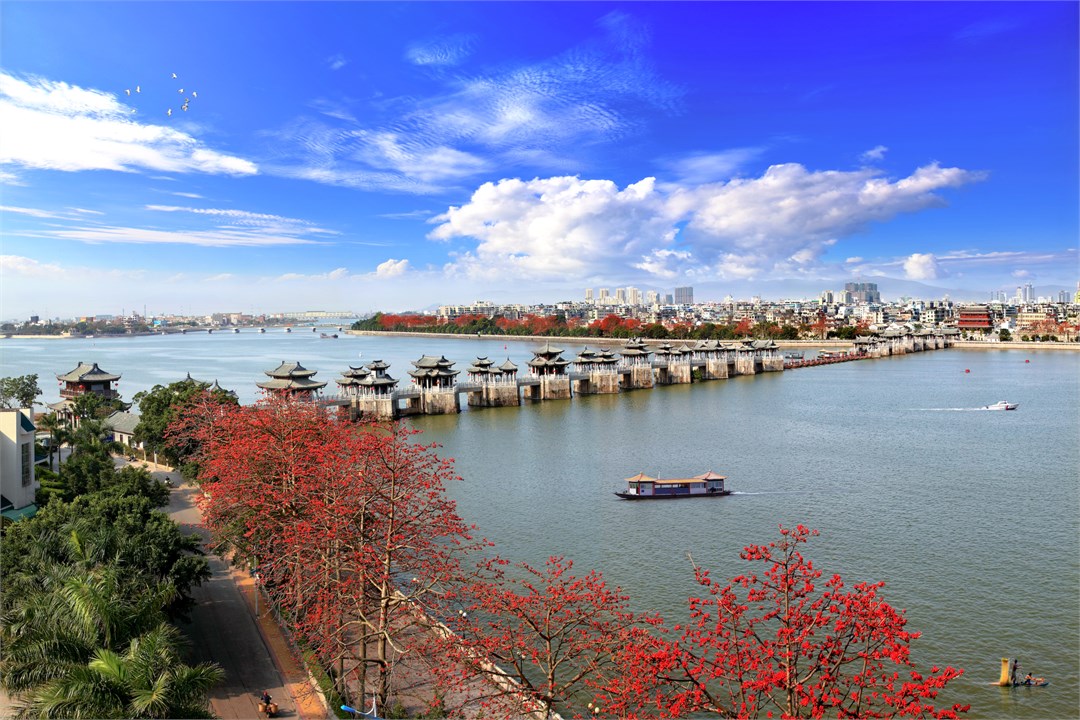
The recorded history of Chaozhou dates back to the Qin Dynasty over 2,200 years ago. It was a commandery, Yi’an, during Yixi’s reign in the Eastern Jin Dynasty (413 A.D.). Later in the early Sui Dynasty (591 A.D.), the commandery became a prefecture and was renamed Chao Prefecture, or Chaozhou. Due to its role as the administrative center for multiple commanderies, prefectures, circuits and superior prefectures over ancient dynasties, Chaozhou gained a reputation as a thriving seaside city rich in cultural attractions. Chaozhou boasts a wealth of intangible cultural heritage, such as embroideries, ceramics, carvings, sculptures, operas, kung fu tea and cuisine. All of them are priceless pieces of the Chinese culture. Chaozhou culture is an important part of the Chinese culture. The city’s cultural landmarks and historic sites, such as Guangji Bridge, Kaiyuan Temple, Memorial Temple of Han Yu, Archway Street and others, symbolize the foundations of the local culture and have tremendous spiritual significance for natives at home and abroad. Of the 1,345 registered immovable cultural relics in the city, 22 are kept in nine nation’s key cultural relic protection sites. Furthermore, 17 national intangible cultural heritage of Chaozhou have been inherited and developed by 22 representative craftspeople, including ten nationally recognized master artisans.
Chaozhou is well-positioned. Its high-speed railway station of the Xiamen-Shenzhen railway acts as eastern Guangdong’s comprehensive transit hub. Also, Meizhou–Chaoshan passenger-dedicated line as well as Shenhai, Shanmei, Dachao and Chaoshan Ring expressways run through the city. It will be a crucial junction for the upcoming Eastern Guangdong intercity railway. Citywide, the total length of the highway reaches 5,470 kilometers. Additionally, Chaozhou Port is a national Class-1 port that welcomes international trade. The Port’s nine piers and 14 berths make it accessible to various international freight routes.
Ceramics, wedding dresses, food products, stainless steel goods, printing and packaging, and aquaculture equipment are all areas where Chaozhou excels. It is the country’s major ceramics exporter, wedding dress manufacturer and apparel supplier for the global market. It also has distinctive agricultural sectors, including tea leaves, aquatic products, flowers and fruits. In particular, Fenghuang Dancong tea is granted a Geographical Indication. Specifically, Chao’an Fenghuang Dancong tea cultural system makes China’s Important Agricultural Heritage Systems. The finest brown croakers in the country come from Raoping County, one of the top 100 counties in the country for digital agriculture.
Chaozhou has a subtropical marine monsoon climate; thus, it enjoys mild temperatures, an appropriate amount of rain and lush vegetation all year round. This environment makes it ideal for farming all through the year. The highest point in eastern Guangdong is the main peak of the Fenghuang mountain range, which rises 1,497.8 meters above sea level. From northwest to southeast, the Han River, Guangdong’s second-longest river, flows through the city. It is the only national demonstration river in the province and one of the ten Most Beautiful Hometown Rivers in China because its water quality has long been maintained or is above Grade II Water Standards. Furthermore, 59% of the city is covered in forests.
Chaozhou has been awarded numerous national honors, including National Historical and Cultural City, Outstanding Tourism City, Famous Hometown of Overseas Chinese, National Garden City, Best Producer of Ceramics, Outstanding Food Product Producer, Outstanding Wedding Dress Producer, Hometown of Chaozhou Cuisine, Hometown of Oolong Tea, Outstanding Arts and Crafts Producer, and Outstanding Folk Crafts Inheritor.
